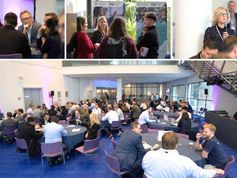Starter guide - Reducing supply chain emissions
As environmental concerns intensify, the business world is being called upon to be stewards of change. For many companies, a significant portion of their carbon footprint is directly linked to their supply chain's transport emissions. Addressing these emissions is not just an environmental necessity; it also offers opportunities to streamline operations and drive cost efficiencies.

Here's a more detailed look at tangible strategies that businesses can deploy in their contexts.
1. Mode of Transportation
Before making any changes, it's crucial to thoroughly understand the emissions associated with each mode of transportation. While air transport might offer speed, it typically has a higher carbon footprint than sea or rail freight.
Strategic Decision Making: Use data-driven analytics to evaluate the total emissions of each shipment based on its mode. Calculate the CO2 emissions per tonne-mile and factor in variables such as delivery speed, cost, and reliability.
Modal Shifts: Consider reallocating portions of your supply chain to more eco-friendly transportation methods. For instance, could you shift a segment of your goods from air transport to rail without compromising on delivery timelines?
2. Green Technologies and Fuels
As technology evolves, there's a wealth of opportunities to integrate more sustainable solutions into the transportation element of the supply chain.
Electrification: If your supply chain involves urban deliveries or short routes, transitioning to electric vehicles (EVs) can be an effective step. While the upfront costs may be higher, the long-term savings and reduced emissions can be significant. Make sure to also consider the infrastructure needed, such as charging stations.
Alternative Fuels: Biofuels, produced from organic materials, can either replace conventional fuels or be blended with them. Investigate suppliers that offer biofuel alternatives and evaluate the potential emissions reduction.
Hybrid Systems: Hybrid vehicles combine traditional combustion engines with electric propulsion. These systems are particularly useful for longer routes where electric-only might not be feasible yet.
3. Collaborative Innovations
Partner with vehicle and technology manufacturers to co-develop or test new sustainable technologies tailored for your specific needs.
Pilot Programs: Engage in pilot programs to test the efficacy and efficiency of emerging technologies, such as hydrogen fuel cells or advanced hybrid systems.
Feedback Loops: Maintain open communication channels with manufacturers to provide feedback and continuously refine the deployed solutions.
4. Optimising Routes and Loads
Operational efficiency is paramount. Advanced software and real-time data analytics can offer powerful insights to optimize transport.
Route Optimisation Software: Implement sophisticated software solutions that use AI to predict the most efficient routes, factoring in variables such as traffic, weather, and road conditions.
Load Consolidation: Ensure every trip, whether by road, sea, or air, is as full as possible. This might involve adjusting delivery schedules or consolidating shipments to maximize load efficiency.
Dynamic Re-routing: Deploy systems that offer real-time re-routing based on live data. This ensures that in case of unforeseen disruptions, your transportation can quickly adjust, minimising delays and conserving fuel.
5. Audits and Feedback Mechanisms
Audits: Regularly audit your transportation operations to understand where efficiencies can be achieved and emissions reduced. Use these insights to adjust and refine your strategies.
Stakeholder Feedback: Engage with drivers, pilots, and other stakeholders to get feedback on the ground. They might offer insights that aren’t immediately apparent from a high-level perspective.
Businesses looking to reduce transport emissions in their supply chain have lots of tools in the kit By integrating a mix of data-driven decision-making, cutting-edge technologies, and continuous feedback, companies can not only dramatically reduce their carbon footprint but also bank operational efficiencies.
The path toward a sustainable and efficient supply chain is complex but attainable, and the rewards—both for the planet and the bottom line—are well worth the effort!






Comments